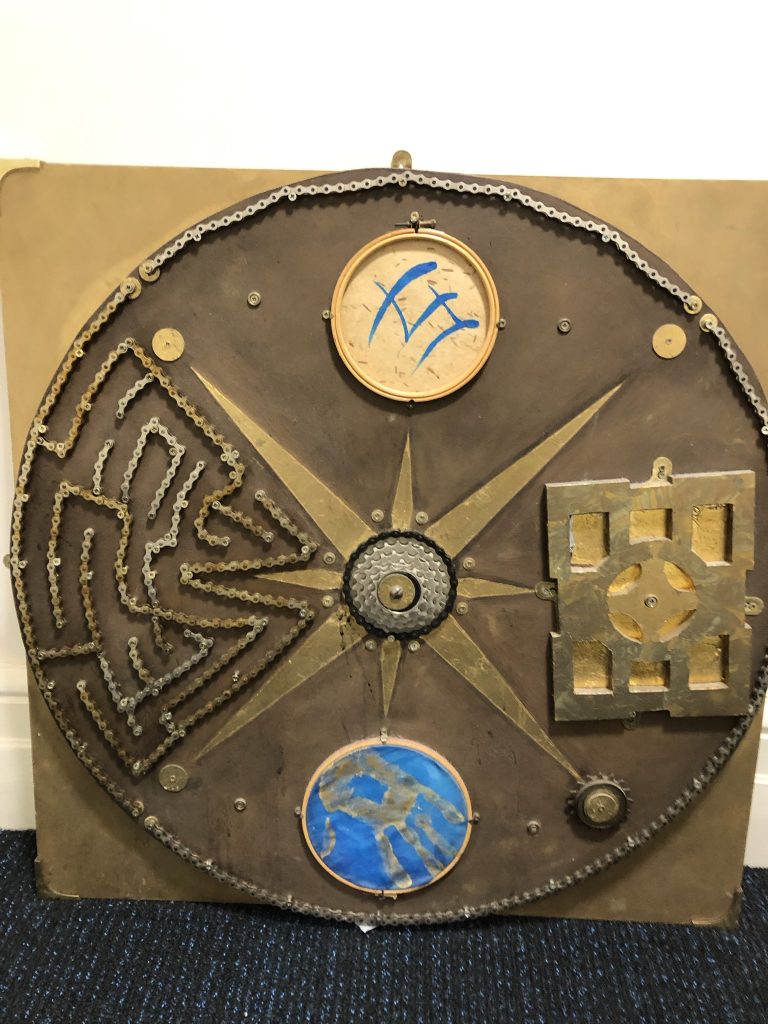|
|
|
|
|
|
|
You can see a BBC interview with Miss Gordon, shortly after her ordination in 1956 here.
The Ella Gordon High Howdon Memorial – an explanation by the artist Jean Spouse
The making of this memorial is intended to be a contemplative act of remembrance and acknowledgement. It is both a tribute and a point of quiet stillness in a restless world.
This work commemorates the life of Ella Gordon, who was the first woman to be ordained into the Presbyterian Church of England and seeks to honour all those who went before and came after, sharing her faith and conviction in a more balanced Church and a greater symmetry in patriarchal systems.
The symbols, chosen to tell their story, seek to encompass spiritual, geographical, political, social, constitutional, cultural and personal journeys.
The memorial is a wall piece consisting of a Quadrata Circuli, relating to the perfect mind of God accomplishing and supporting Creation.
Compass points within the circle refer to the universal nature of the central theme and also Ella Gordon’s many journeys on which her vocation took her.
Memories of Miss Gordon are inextricably linked with her mode of transport. The presence of bicycle components has special significance in that her bicycle took her on so many of her life’s journeys both local and epic. She worked as a missionary among children in Manchuria until first the Japanese occupation and later the political intolerance of its communist revolution expelled her. Her bicycle had been dismantled and hidden for safekeeping. After Miss Gordon left the country, the children she had taught there reassembled it and rode it over 100 miles to the nearest port, addressing it to her in Liverpool. It remained her only vehicle throughout her long, busy life.
The use of gold leaf has spiritual significance to many religions and indicates the state of grace that was lost and is sought again through religious and philosophical
endeavour.
The silk images link with children here and in China who were touched by Ella Gordon’s life and signifies the traditionally nurturing role of women. The small hand
print is an image of childhood and acknowledges all of the work with children. The Chinese character means “this mountain” and refers to the struggle against adversity in order to bring about change in a chauvinistic hierarchy. Mountains are an emblem of spiritual journeys and pilgrimages being the point where heaven and earth meet and present both benign and hostile challenges.
The Celtic Cross echoes the squared circle and is a symbol of steadfast faith and fortitude. This powerful image links with Miss Gordon’s Scottish origins, the beginning and end of her life, completing the circle.
The presence of a labyrinth recognises that children are familiar with mazes as puzzles but that they have a more profound significance. It draws all parts of the story together in a visual and metaphorical journey through a harsh and hazardous material world towards the spiritual centre.
Updated: 26/2/2025

